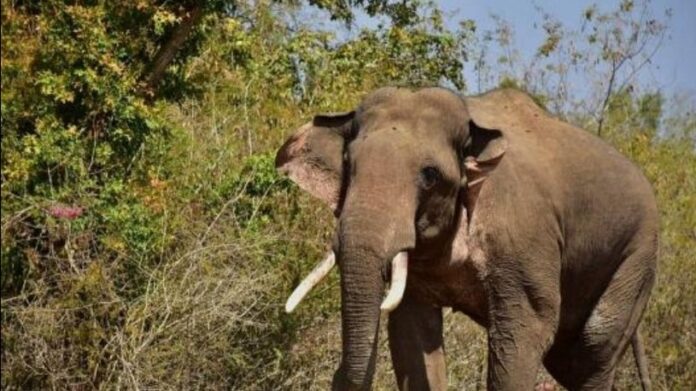An adult male elephant was found dead early this morning in a paddy field at Borkuruka revenue village, located under the Margherita West Range Forest of Digboi Forest Division in Assam. The lifeless body of the elephant was discovered by locals who were quick to raise concerns about the potential causes behind the animal’s untimely demise. As investigations continue, the local community is pointing fingers at the electrification of agricultural fields and what they describe as negligence by forest authorities as the likely causes.
The discovery of the elephant’s body sent shockwaves through the region, particularly among wildlife enthusiasts and conservationists. Local villagers who frequently witness wildlife movements in the area noted that the elephant appeared to have died under mysterious circumstances. As elephants in the region are often seen foraging in agricultural fields, the discovery of the animal in such close proximity to human settlements has raised alarms.
According to villagers, the animal might have wandered into the fields in search of food, a common behavior for elephants. However, they are blaming the electrification of farms, which is often used as a means to ward off crop-raiding wildlife. In recent years, reports of elephants and other wildlife being electrocuted due to unregulated use of electric fences have become increasingly common in the region. Locals believe that the elephant’s death may have been a result of an accidental electrocution, a situation that has occurred in the past.
The use of electric fences by farmers has been a controversial issue in Assam. While the intention behind electrifying fields is to prevent wildlife from damaging crops, these fences can pose a grave danger to animals, particularly those like elephants that tend to roam large areas in search of food. As elephants are often attracted to the fertile and easy-to-reach crops in agricultural areas, they are at risk of encountering these hazardous electric wires. It is speculated that the elephant might have come into contact with a live wire, leading to its death.
The local community has expressed frustration over what they perceive as the forest authorities’ negligence in controlling the growing issue of electric fencing. Villagers argue that while the use of electric fences as a protective measure is understandable, it should be done in a manner that ensures the safety of wildlife. The lack of proper regulation and monitoring of these electric fences has raised questions about the effectiveness of wildlife protection efforts in the region.
Furthermore, locals have pointed out that the authorities have been slow in addressing the root causes of human-animal conflict. As more and more wildlife habitats are encroached upon due to agricultural expansion and urbanization, the boundaries between human settlements and wildlife territories continue to blur. This has resulted in frequent clashes between humans and animals, particularly elephants, which are increasingly seen as a threat to farmers’ livelihoods. However, many feel that the focus of authorities has been primarily on mitigating the aftermath of such incidents, rather than preventing them altogether.
Conservationists have also joined the chorus of concern over the incident, calling for more robust measures to ensure the safety of wildlife in Assam. Experts suggest that a more comprehensive approach is needed to strike a balance between agricultural needs and wildlife conservation. This could include the installation of non-lethal deterrents to keep elephants and other wildlife away from farmlands, as well as stricter regulations on the use of electric fencing.
In addition to addressing the issue of electric fences, there is an urgent need for increased awareness and education about the dangers posed by these measures. Local communities must be made aware of the potential risks to wildlife and provided with safer alternatives for protecting their crops. At the same time, forest authorities must step up efforts to protect wildlife corridors and ensure that animals are not forced to venture into human settlements in search of food.
The death of the elephant in Margherita has left a deep impact on the local community, wildlife enthusiasts, and conservationists alike. It serves as a stark reminder of the challenges faced by wildlife in Assam, particularly in areas where human settlements and wildlife territories overlap. As investigations continue, authorities will have to carefully examine the evidence and take necessary steps to address the underlying causes of such incidents to prevent further loss of life among these majestic creatures.




